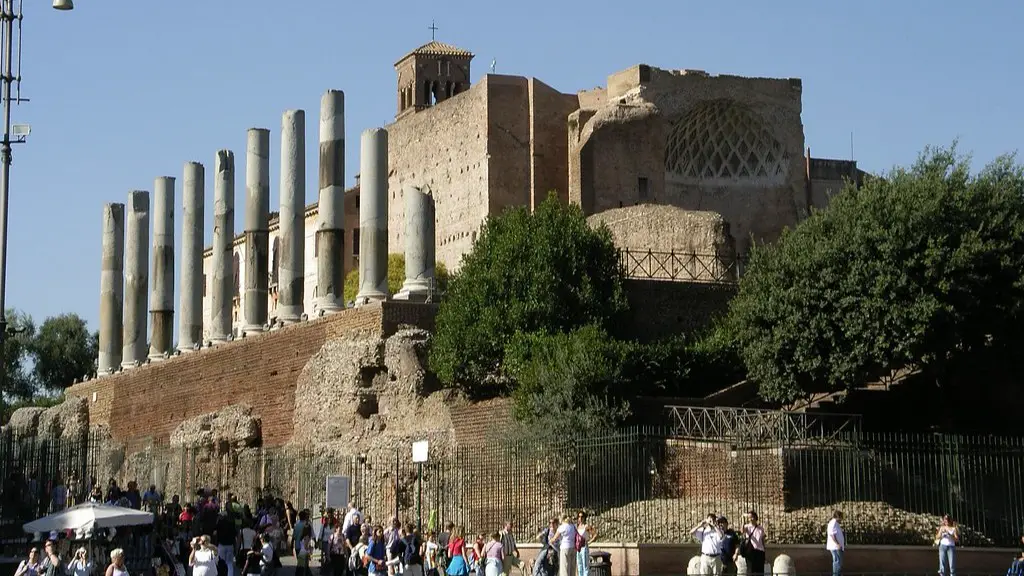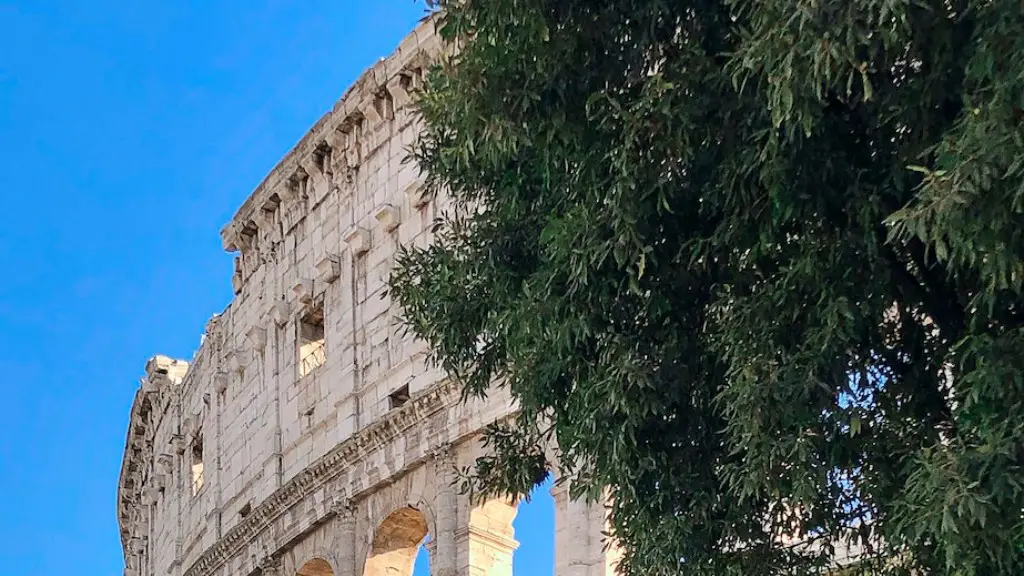Origins and Influence
The mystery cults of Ancient Rome, held in secrecy and secretiveness, mystified even the ancient Roman mind. These cults gained popularity in the later stages of the Roman Republic and spread around the Mediterranean, from Italy to Asia Minor and even to Greece. The mystery cults’ mystery was largely due to their exclusive initiation ceremonies and their strong emphasis on mysticism and the occult.
The mystery cults were formed mostly by Greek initiates who were keen to find deeper meaning in their lives, as well as by established Roman politicians who wanted to control the faith of their people. While the exact origins of the cults remain shrouded in mystery, their influence in the ancient Roman world can still be seen today.
The mystery cults brought a sense of spirituality and mysticism to Roman religion and culture. They saw the Earth and its elements as inhabited by gods, goddesses, and spirits, and this belief was expressed through rituals and ceremonies, in which the participants attempted to form a direct connection with these deities.
The most prominent example of ancient Roman mystery cults was the cult of Cybele, goddess of love and fertility. The cult involved ecstatic and bizarre rituals, such as priests castrating themselves to prove their devotion to the goddess. While such practices often invoked criticism and shock by outsiders, they were seen as fundamental components of the cult by its participants.
System of Beliefs
Another key component of the mystery cults was their system of beliefs. These cults believed in an afterlife, in which the soul of the deceased would receive judgment from the gods and either gain eternal bliss or be cursed in the underworld. By participating in the cult’s initiation ceremonies, individuals hoped for redemption and reward in the afterlife.
The teachings of the mystery cults were centered around the idea of personal transformation. They taught their followers that, through purification and other spiritual practices, one can gain insight into the workings of the divine. In essence, these cults encouraged participants to take personal responsibility for their own spiritual growth and development.
The mystery cults also provided a sense of camaraderie and brotherhood, which served as a counterpoint to the otherwise cold and austere environment of the ancient Roman world. With their exclusive initiation ceremonies and open-mindedness towards other beliefs, the cults provided a safe environment in which individuals could explore their personal spirituality and beliefs without feeling alienated or judged.
Isis Cult
In the later centuries of the Roman Republic, the cult of Isis, the ancient Egyptian goddess of love, became incredibly popular. Like other mystery cults, the cult of Isis was characterized by its exclusive initiation rituals and its belief in an afterlife. However, it was unique in its emphasis on women’s rights and its concept of divine justice.
The cult of Isis spread around the Mediterranean and eventually became accepted in the Roman Empire. The cult provided a safe haven for women and male initiates could not gain access without female permission. The cult of Isis also discussed divine justice in a way that was unprecedented in the ancient world, with female justice being valued as much as that of their male counterparts.
Legacy of Mystery Cults
The mystery cults of Ancient Rome had a profound influence on the development of the Roman Empire, both politically and religiously. Politically, the cults provided an alternative to the more austere and hierarchical Roman religious system. By embracing new concepts and encouraging personal transformation, the cults enabled individuals to find meaning and a sense of belonging in a larger system of beliefs.
Religiously, the mystery cults brought innovations to the ancient Roman world, such as the concept of divine justice and the belief in an afterlife. They encouraged the exploration of personal spirituality and provided a sense of community that was seen as lacking in the more traditional forms of Roman religion.
Interaction with Christianity
The mystery cults of Ancient Rome interacted with Christianity in a number of ways. While there was some resistance from the early Church to embrace the mystery cults, many of their concepts and beliefs were eventually accepted as Christian teachings. This is evident in the concept of the afterlife, which was adopted by the Church as a belief in resurrection after death.
The mystery cults also had a significant influence on the development of Christian art and architecture. The cults of Cybele and Isis in particular provided a source of inspiration for ancient Christian art, with their vivid colors and mystical symbols often seen in churches and other religious buildings.
Modern Mystery Cults
The legacy of the mystery cults of Ancient Rome can still be seen today. In modern times, mystery cults still exist in some form and can be found in all corners of the world. They are often associated with secret societies and spiritual groups, such as the Freemasons, who guard their rituals and beliefs closely.
Modern mystery cults are often accused of being cults and criticized for their secrecy and esoteric practices. However, they continue to flourish throughout the world due to their emphasis on freedom of thought and individual transformation. They provide a sense of community and solace for many individuals, allowing them to explore their beliefs without judgement from others.
Social Implications
The mysterious rituals and beliefs of the ancient Roman cults have had a deep impact on modern society. Their emphasis on personal transformation, divine justice, and deeper understanding of the spirit world can be seen as a source of inspiration for individuals seeking spiritual growth.
The mystery cults also highlighted the power of collective action, as they showed that individuals could develop strong bonds and form powerful communities when they were united by a common set of beliefs and practices. Through their rituals and beliefs, the mystery cults of Ancient Rome provided a sense of comfort and solace to the everyday person, allowing them to explore deeper aspects of faith and connect with their spiritual side.
Religious Significance
At the same time, the mystery cults of Ancient Rome also had a significant impact on religious practice. The cults provided a radical alternative to the traditional Roman religion, as their beliefs and practices often had a spiritual and metaphysical slant that differentiated them from more traditional forms of worship.
The mystery cults of Rome are also credited with influencing early Christianity, with many of the cults’ concepts and beliefs being adopted by the Church in the centuries immediately following the reign of the Roman Empire. Through their rituals and teachings, the cults opened the door to a more varied and spiritual interpretation of faith, one that continues to shape modern religious thought.
Modern Adaptations
Modern religion still bears the influence of the mystery cults of Ancient Rome. In contemporary spirituality and faith, the emphasis on personal transformation and divinity can be seen as a direct result of the mystery cults’ contributions. The rituals and beliefs of the cults also still permeate popular culture and media, with groups such as the Freemasons using many of the cults’ teachings to guide their own practices.
The mystery cults of Ancient Rome have had a lasting influence on the development of religion and spirituality in modern times. Through their cultivation of a more contemporary interpretation of faith, along with their rituals and beliefs, the cults have provided room for personal exploration and transformation, paving the way for individuals to create their own spiritual identities.


